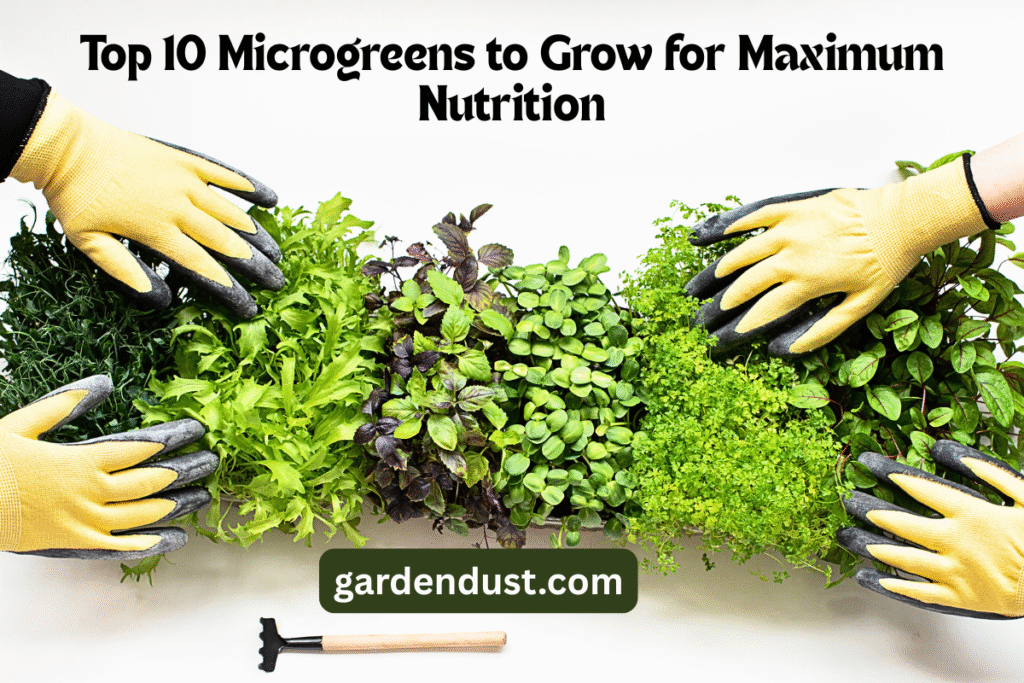Microgreens have taken the health and gardening world by storm—and with good reason. These vibrant, nutrient-packed greens are harvested just days after germination, offering a concentrated dose of vitamins, minerals, and antioxidants. Whether you’re aiming to boost your daily nutrition or grow your own superfoods at home, microgreens offer a convenient, flavorful, and cost-effective solution.
But with so many options available, which microgreens pack the biggest nutritional punch? In this comprehensive guide, we’ll explore the top 10 microgreens to grow for maximum nutrition, backed by science and practical growing tips to help you succeed.
What Makes Microgreens So Nutritious?
Microgreens are harvested in the early stages of growth—usually within 7 to 21 days of germination—when the plant is just beginning to develop its first true leaves. At this stage, they are highly concentrated with:
- Vitamins (A, C, E, K, and B-complex)
- Minerals (iron, calcium, magnesium, potassium, zinc)
- Antioxidants and polyphenols
- Digestive enzymes and chlorophyll
- Amino acids and plant compounds
According to a USDA study, some microgreens can contain up to 40 times more nutrients than their mature counterparts.
Top 10 Microgreens to Grow for Maximum Nutrition
Let’s dive into the most nutrient-dense microgreens you can grow at home, each packed with unique health benefits.
1. Broccoli Microgreens
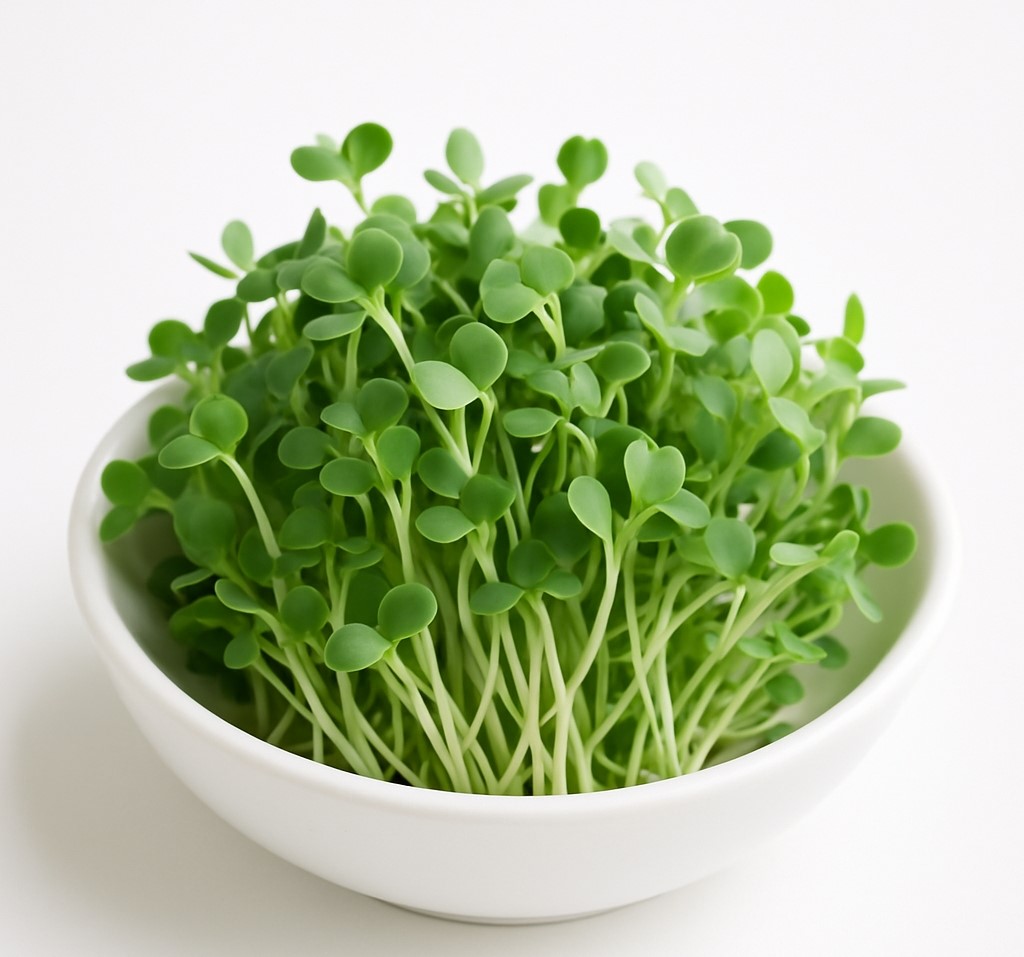
Nutritional Profile:
- High in sulforaphane, a potent cancer-fighting compound
- Rich in vitamins A, C, E, and K
- Contains calcium, iron, and magnesium
Health Benefits:
- Supports detoxification and liver function
- May reduce inflammation and oxidative stress
- Promotes heart health and blood sugar regulation
Growing Tips:
- Germinates in 2–3 days, ready in 7–10 days
- Grows well in soil or hydroponically
- Prefers moderate light and consistent moisture
2. Red Cabbage Microgreens
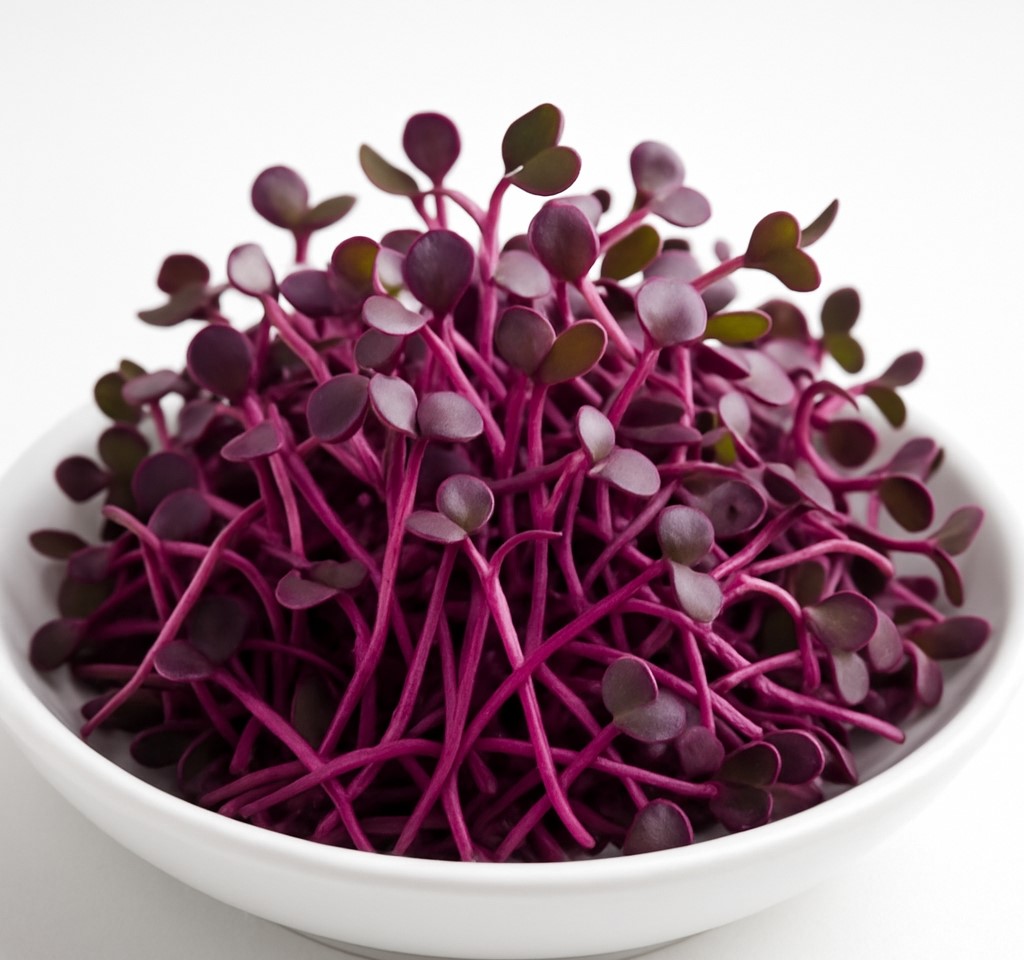
Nutritional Profile:
- Loaded with vitamin C, vitamin K, and beta-carotene
- Rich in anthocyanins, a type of antioxidant
- Contains glucosinolates, which support cellular health
Health Benefits:
- Enhances immune function
- Promotes bone and skin health
- Has anti-inflammatory and anticancer properties
Growing Tips:
- Takes 7–12 days to harvest
- Grows best in well-drained soil with good air circulation
- Prefers cooler temperatures and indirect sunlight
3. Sunflower Microgreens
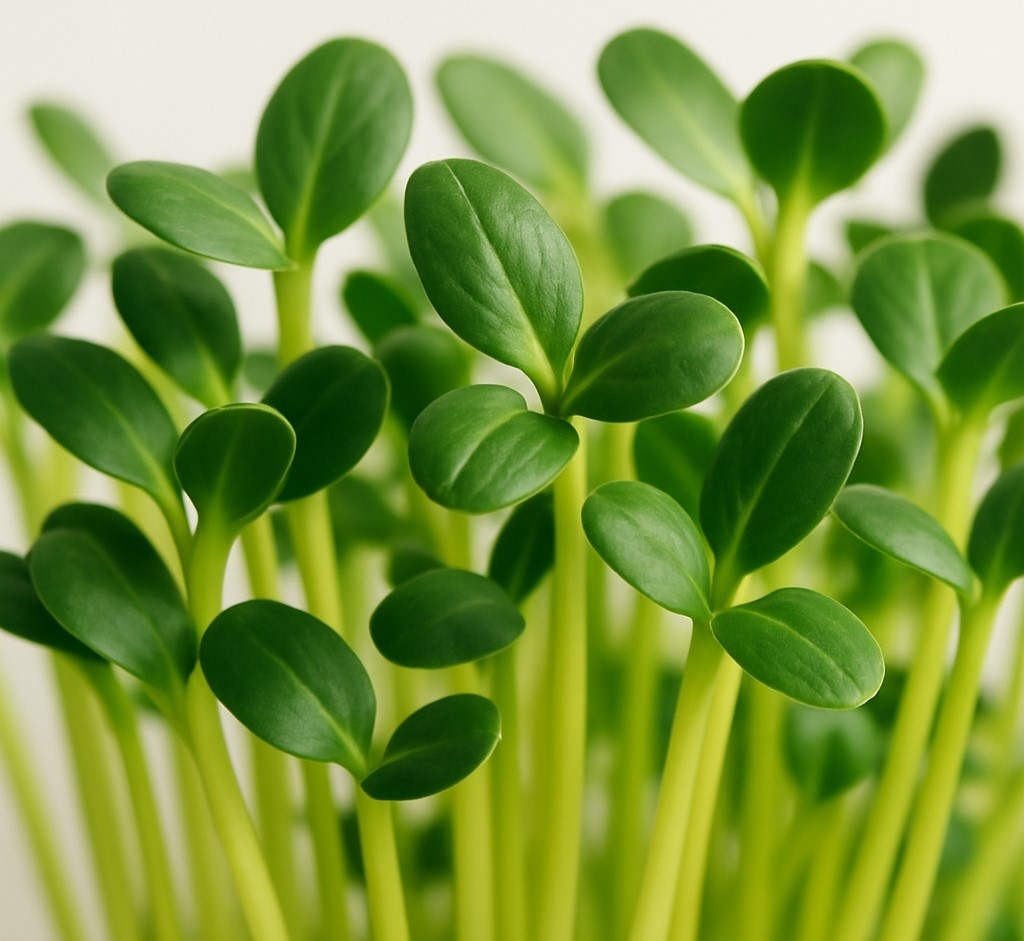
Nutritional Profile:
- High in vitamin E, a powerful antioxidant
- Excellent source of protein and healthy fats
- Contains zinc, selenium, magnesium, and iron
Health Benefits:
- Boosts energy and supports muscle repair
- Enhances skin and heart health
- Improves immune and nervous system function
Growing Tips:
- Needs to be soaked for 6–8 hours before sowing
- Grows vigorously and is harvest-ready in 7–10 days
- Requires ample sunlight and consistent watering
4. Pea Shoots (Green Pea Microgreens)
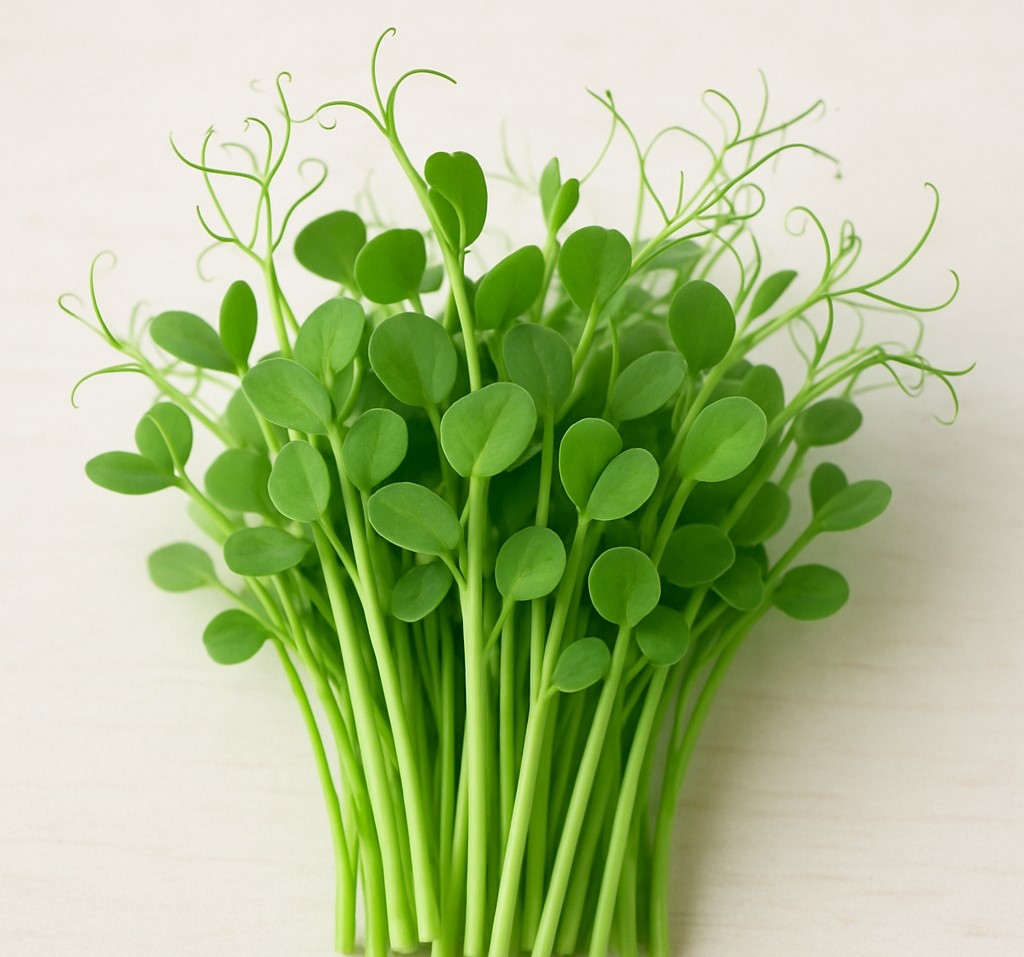
Nutritional Profile:
- Rich in vitamin C, vitamin A, and folate
- High in chlorophyll and plant-based protein
- Contains iron, potassium, and fiber
Health Benefits:
- Supports eye health and immune function
- Boosts collagen production and skin repair
- Aids digestion and muscle recovery
Growing Tips:
- Soak seeds for 8–12 hours before planting
- Harvest in 10–14 days, when 4–6 inches tall
- Can regrow if left with some stem during harvesting
5. Kale Microgreens
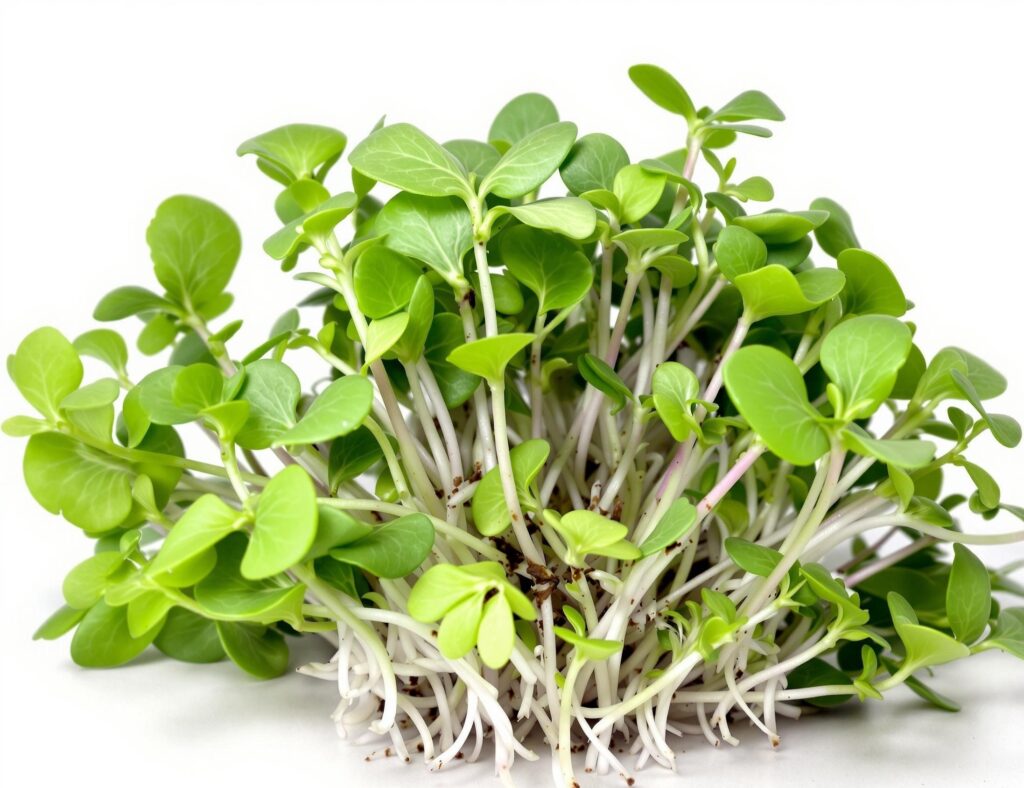
Nutritional Profile:
- Contains vitamin K, vitamin A, and vitamin C
- Rich in calcium, iron, and omega-3 fatty acids
- Loaded with antioxidants like quercetin and kaempferol
Health Benefits:
- Supports bone health and blood clotting
- May help lower cholesterol and blood pressure
- Provides anti-inflammatory and immune-boosting effects
Growing Tips:
- Easy to grow, ready in 8–12 days
- Tolerates lower light than many microgreens
- Soil or hydroponic growth both effective
6. Radish Microgreens
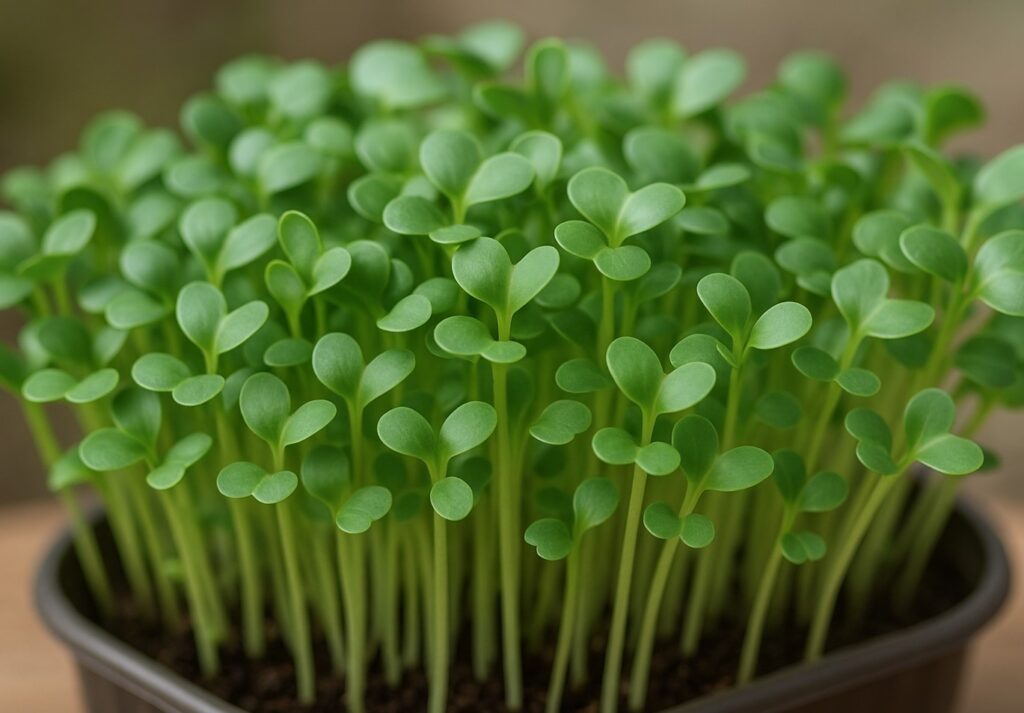
Nutritional Profile:
- High in vitamin C, B6, and folate
- Contains glucosinolates, fiber, and calcium
- Spicy flavor indicates high phytochemical content
Health Benefits:
- Improves digestion and metabolism
- Detoxifies the liver and aids weight loss
- Antibacterial and antifungal properties
Growing Tips:
- Germinates in 1–2 days, harvestable in 5–7 days
- Fastest-growing microgreen for impatient gardeners
- Needs full sunlight or grow light for optimal growth
7. Amaranth Microgreens
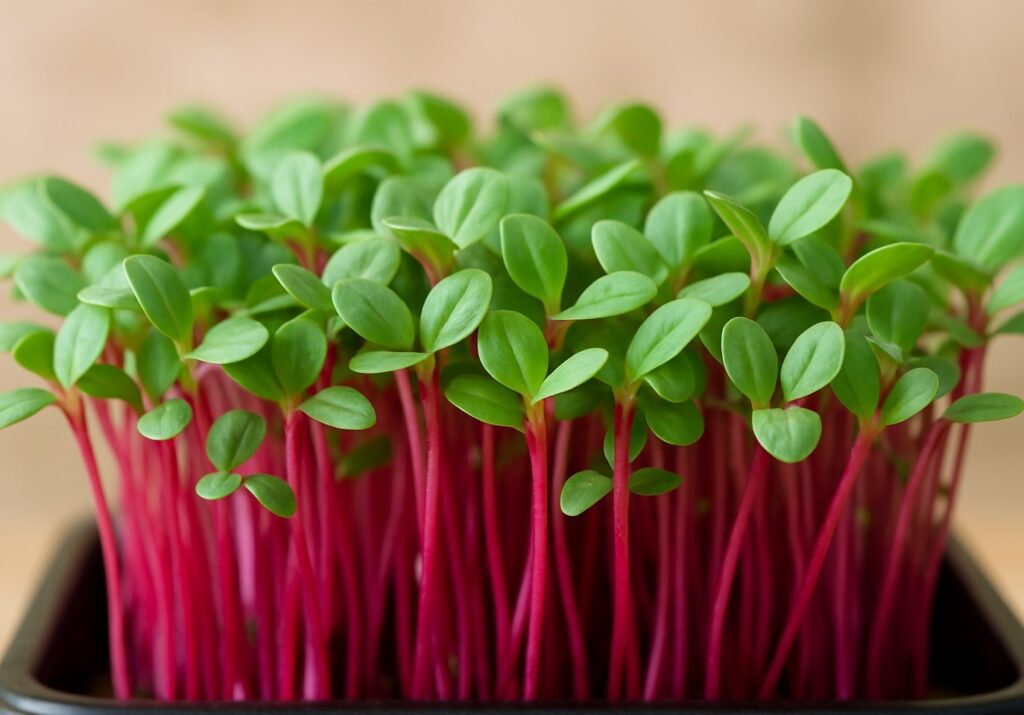
Nutritional Profile:
- Packed with vitamin K, vitamin E, and C
- Contains lysine, an essential amino acid
- High in calcium, magnesium, and iron
Health Benefits:
- Supports bone density and cardiovascular health
- Helps with muscle growth and immune strength
- Rich in anti-aging antioxidants
Growing Tips:
- Needs light to germinate, do not cover with soil
- Germinates in 2–3 days, harvest in 8–12 days
- Has a beautiful magenta color ideal for garnishes
8. Mustard Microgreens
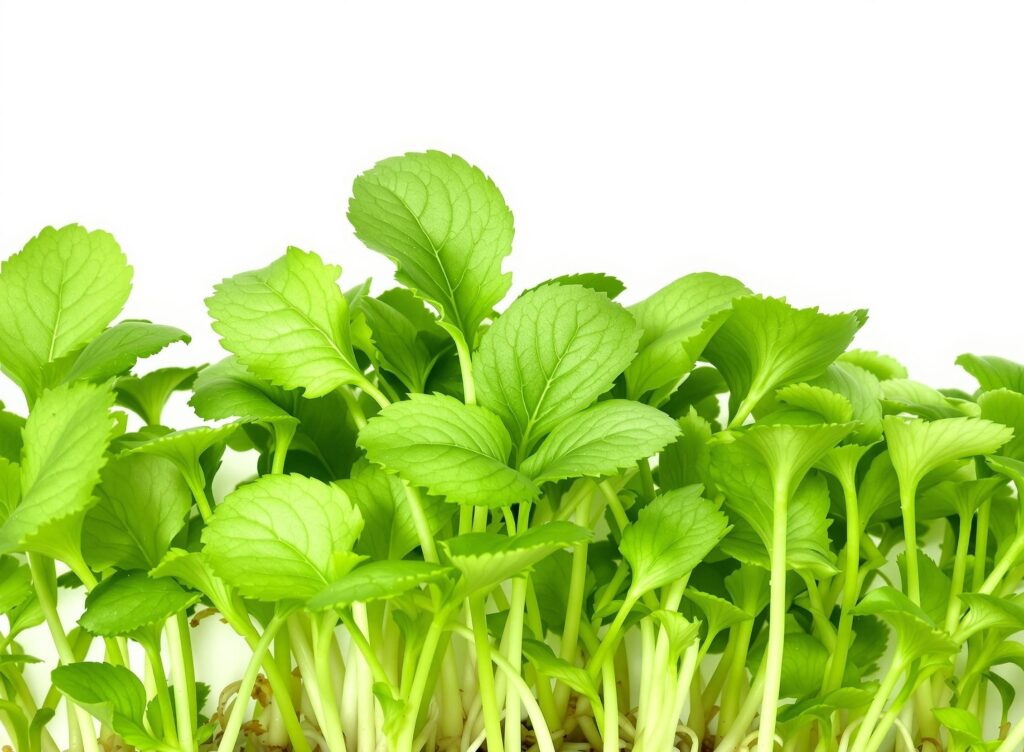
Nutritional Profile:
- Excellent source of vitamin K, E, and A
- Contains selenium, magnesium, and omega-3s
- Pungent flavor suggests high sulfur-containing compounds
Health Benefits:
- Promotes detoxification and joint health
- Stimulates metabolism and boosts circulation
- May protect against oxidative damage and chronic disease
Growing Tips:
- Germinates quickly in 1–2 days
- Ready to harvest in 5–10 days
- Strong flavor—great in small amounts for spice lovers
9. Beet Microgreens
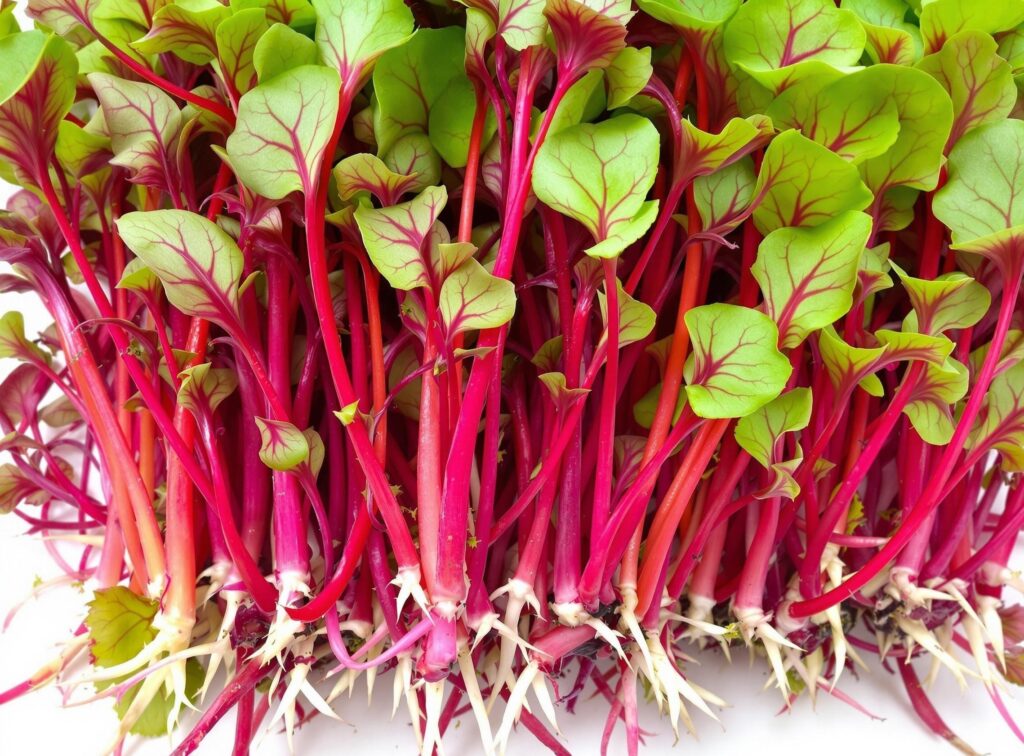
Nutritional Profile:
- High in folate, vitamin A, and manganese
- Contains nitrates that boost nitric oxide production
- Includes betalains, potent antioxidants
Health Benefits:
- Supports brain and heart health
- Reduces blood pressure and inflammation
- Enhances athletic performance and endurance
Growing Tips:
- Slow to germinate (4–5 days), ready in 10–14 days
- Stunning red stems and green leaves—very decorative
- Needs moderate sunlight and rich soil
10. Basil Microgreens
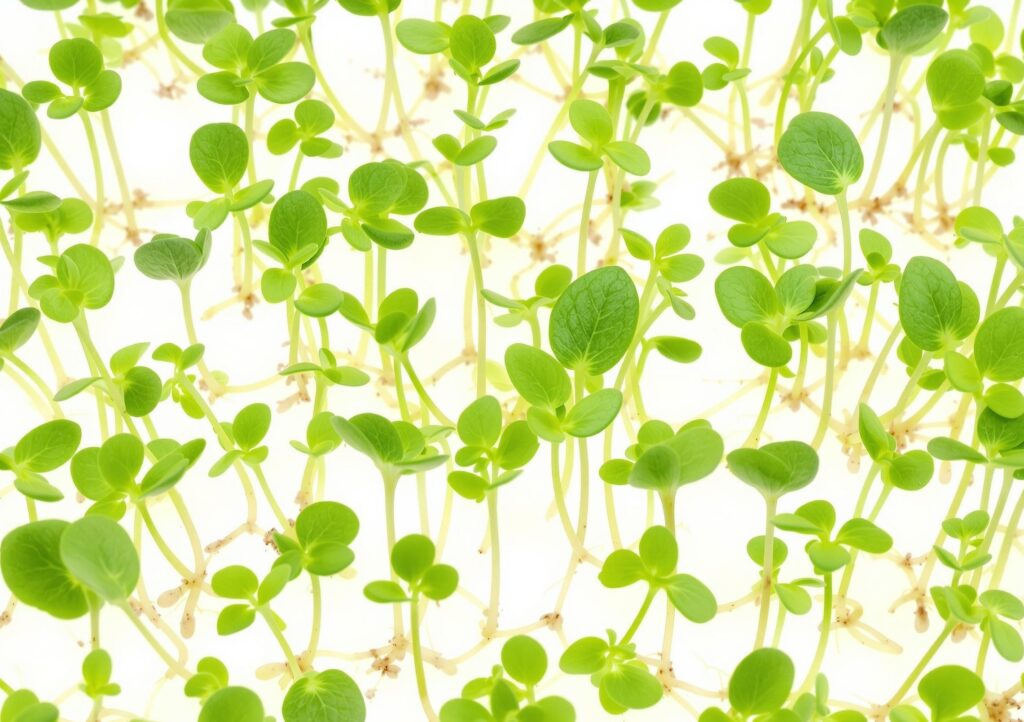
Nutritional Profile:
- Rich in vitamin K, iron, and calcium
- Contains eugenol, a compound with anti-inflammatory properties
- High in antioxidants and plant-based compounds
Health Benefits:
- Enhances digestion and reduces bloating
- Offers antibacterial and antiviral protection
- Supports mental clarity and stress reduction
Growing Tips:
- Germinates in 4–7 days, harvestable in 14–20 days
- Requires warmth and high humidity
- Grows slower than most microgreens, but worth the wait
How to Maximize Nutrition in Your Microgreens
To get the most nutritional value from your homegrown greens, consider the following tips:
1. Use Organic, High-Quality Seeds-Select non-GMO, untreated seeds for microgreen use. Organic seeds ensure no chemical residues.
2. Harvest at the Right Time-Harvest microgreens when the first set of true leaves appears—this is when nutrient concentration peaks.
3. Ensure Proper Lighting-Insufficient light reduces photosynthesis, affecting nutrient levels. Aim for 12–16 hours of light per day using natural sunlight or LED grow lights.
4. Don’t Overwater-Too much water can cause rot and mold, diminishing plant health. Mist gently or water from the bottom.
5. Consume Immediately-Microgreens are most nutritious and flavorful right after harvest. If storing, refrigerate and eat within 5–7 days.
Microgreens vs. Mature Greens: A Nutrient Comparison
Source: USDA Agricultural Research Service
| Plant | Nutrient in Microgreen | Concentration Compared to Mature Leaf |
| Red Cabbage | Vitamin C | 6 times higher |
| Cilantro | Lutein and Beta-Carotene | 3 times higher |
| Radish | Vitamin E | 40 times higher |
| Garnet Amaranth | Vitamin K | 20 times higher |
| Basil | Polyphenols | 8 times higher |
How to Incorporate Microgreens Into Your Diet
Microgreens are versatile. Use them in:
- Smoothies: Add a handful of kale, broccoli, or amaranth microgreens.
- Salads: Mix sunflower, radish, and pea shoots for texture and flavor.
- Sandwiches/Wraps: Layer microgreens in place of lettuce.
- Soups: Use basil, mustard, or beet microgreens as garnishes.
- Eggs and Avocado Toast: Add a nutritious crunch.
Final Thoughts
Microgreens are a powerhouse addition to any diet. They’re easy to grow, packed with nutrients, and incredibly flavorful. Whether you’re a beginner gardener or a health-conscious eater, incorporating microgreens like broccoli, red cabbage, sunflower, or beet into your home garden can offer both culinary delight and health benefits. By choosing the most nutritious varieties and following best growing practices, you’ll not only enjoy vibrant dishes but also boost your well-being—one tray of greens at a time. Happy Gardening…

